Introduction
In today’s digital-first marketplace, high-quality commercial photography isn’t just a luxury for businesses—it’s an essential investment. As social media platforms have evolved, I’ve witnessed a dramatic transformation in how businesses approach visual content. The demand for photography and video has grown exponentially, while the lifespan of content has shortened considerably. Fueled by the rise in social media and more advanced websites the demand for visual content has shifted which prioritises engaging visuals, quick storytelling, and shareability. Photography trends toward authentic, attention-grabbing images, compelling businesses and creators to produce frequent, visually appealing content to stay competitive and maintain audience interest. Creating fresh photography has become critically important to any company’s marketing strategy.
This comprehensive guide explores the various types of commercial photography your business might need, the measurable benefits of investing in professional photography, and practical tips for getting the most value from your visual content strategy.

Commercial Photography in Today’s Digital Landscape
How Business Photography Needs Have Evolved
The demand for commercial photography has grown exponentially with the rise of social media and digital marketing. Businesses today need significantly more visual content than ever before, and they need it more consistently as content lifecycles continue to shorten. As a photography professional, staying up with trends is essential—not just understanding the style of imagery but taking it further to comprehend how images are used across platforms.
Social media platforms constantly update their image policies, best practices, and preferred dimensions. This evolution extends beyond still photography to video content as well. Many clients now request not just brand videos but news reels and social media edits. The formats have evolved too—beyond traditional landscape and square crops, portrait-shaped content for platforms like Instagram Reels has become almost a priority when creating content for clients.



The Impact of AI on Commercial Photography
Despite advancements in AI-generated imagery, there remains strong market demand for authentic, real photography. While AI is making inroads, particularly in editing processes where clients might expect more polished, flawless looks in images, we’re still in the very early stages of this technology’s impact on commercial photography.
AI-generated images, while increasingly realistic, can still often be identified as artificial, creating potential distrust among clients who value authenticity and transparency. When businesses use such imagery, clients may question their honesty or integrity, damaging brand credibility and weakening consumer trust. Until AI images become indistinguishable from genuine photography, reliance on them risks undermining client relationships and brand reputation.
Many businesses remain cautious about AI-generated imagery, not wanting to undermine client relationships and brand reputation, preferring real images of people for their marketing materials. This preference for authenticity creates trust with consumers who can distinguish between artificial and genuine content.
Looking ahead, authentic photography will continue to hold significant value, particularly for certain types of shoots. While AI can produce single images, capturing live events, product launches, and experiential marketing still requires the skills of a professional photographer. These applications will maintain a substantial need for live photography for the foreseeable future.

Professional Product Photography Services
Techniques for Impactful Product Photography
Creating effective product photography requires a combination of technical skill and strategic thinking. The approach differs depending on whether the images are intended for e-commerce or advertising purposes. For product photography with impact, several fundamental techniques are essential: clear, minimal, well-lit presentation, close-up details, varied angles, dynamic lighting, styling that communicates and elicits the desired feel and emotion, and professional retouching.
E-commerce Product Photography Best Practices
For e-commerce websites, the prevailing trend involves presenting products against clean white backgrounds, showing each side and angle. This approach is complemented by including several practical images demonstrating the product in use. This combination helps potential customers understand not just how the product looks, but how it functions in real-world settings.
However, many product pages fall short by not effectively demonstrating usability. The true value comes from showing a product being used in a way that highlights its unique features and benefits. This requires photographers to develop a deep understanding of what makes a product distinctive and how to visually communicate those advantages.



Corporate and Brand Photography Services
Creating Authentic Brand Photography
An effective approach to corporate photography emphasises authenticity and genuine connection rather than artificial staging. This process begins with understanding the business services in depth—learning exactly what they offer, how long they’ve been operating, and what distinguishes them from competitors. The goal is creating content that genuinely speaks to their target audience and captures and communicates the desired emotional response from engagement with the brand.
This personal element allows for the capture of authentic imagery that tells a compelling story about the brand. Rather than relying on generic corporate imagery, this approach showcases the genuine character and values of the business.
Website Photography for Businesses
For business websites, effective photography involves capturing real people doing real work. This means visiting client workplaces to photograph employees performing their actual services, capturing professional headshots of key team members, and creating various general content to populate the website.
This authentic approach creates more engaging and trustworthy visual content than staged or stock photography, helping potential customers connect with the human elements of the business. Website visitors can see real people behind the company, fostering a sense of connection and trust that generic imagery simply cannot provide.
Below: a series of images from Infoxchange – a not-for-profit social enterprise that has been delivering technology for social justice.
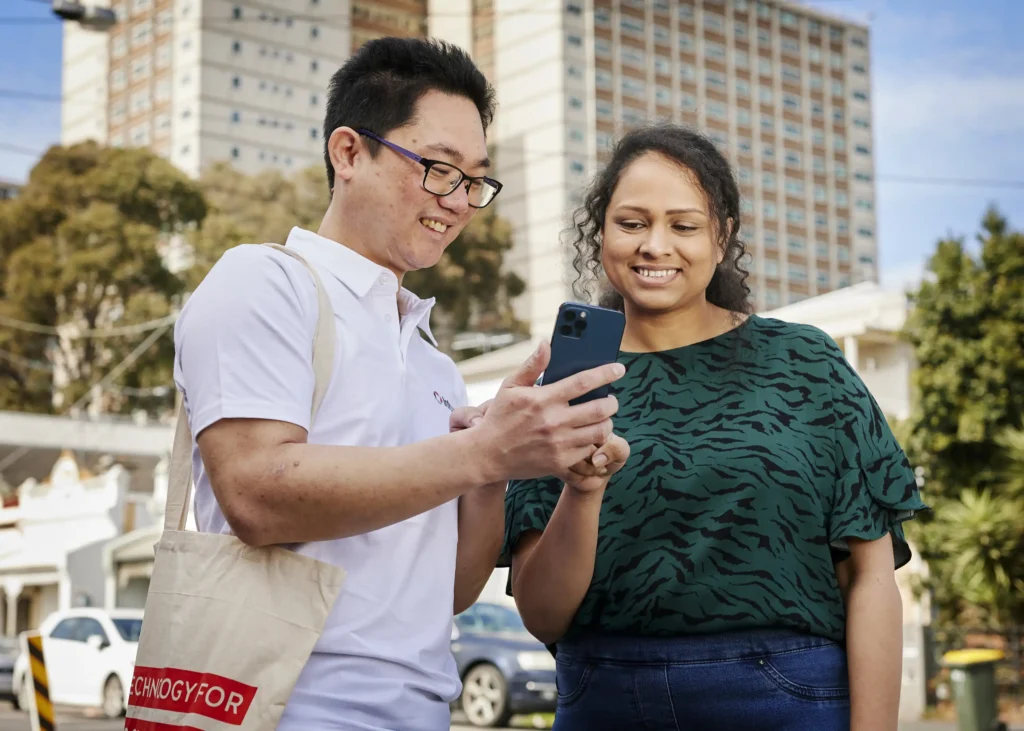
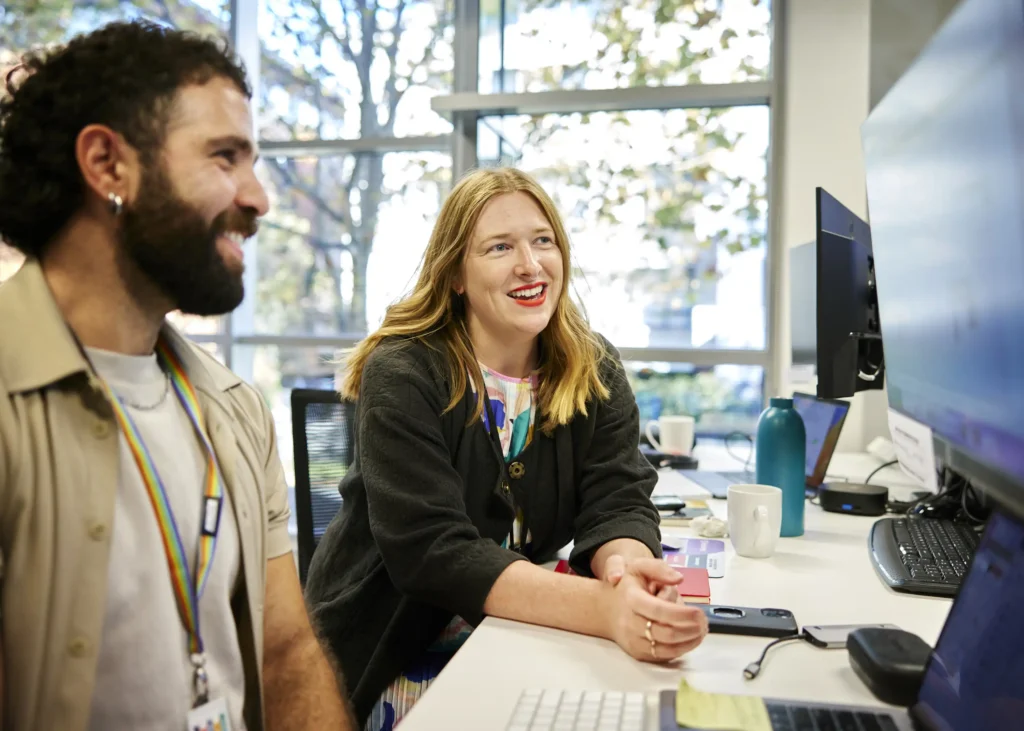




Lifestyle Commercial Photography Services
Planning Authentic Lifestyle Photography Shoots
Creating lifestyle photography that feels genuinely authentic rather than staged requires careful planning and a clear understanding of the brand’s values and target audience. This process begins with thorough consultation with the client to develop a detailed brief about the product or service.
The initial discussion focuses on the desired emotional response from viewers—exploring what action potential customers should take after seeing the content and what the client hopes to achieve with the images. From these foundational questions, the planning extends to practical elements: identifying appropriate models, determining suitable wardrobe choices, selecting ideal locations, and deciding how best to demonstrate the product in use.
Collaborative Approaches to Creative Direction
The creative direction process varies depending on whether working directly with corporate clients or through creative agencies. With agencies, the process typically involves formal presentations of mood boards or director’s treatments, particularly for video projects. These meetings involve mutual evaluation—the agency assessing the photographer’s capabilities and the photographer understanding the agency’s requirements and working style.
When working directly with corporate clients, there’s often more opportunity to propose creative ideas and stylistic approaches. These clients frequently look to the photographer for direction on visual style, creating a more collaborative relationship. Both approaches ultimately converge on the same goal: understanding the brief, grasping the desired style, and executing the vision effectively.
Case Study: Formula 1 Launch at Legoland
A notable example of this collaborative approach involved creating content for a Formula 1 launch at Legoland. The assignment required capturing diverse photo and video content for Legoland’s global office that would be used for marketing launches worldwide. The client provided extensive creative freedom, asking for a variety of content featuring different activities and a diverse crowd of attendees.
After reviewing previous content that hadn’t performed well, the strategic approach involved elevating the aesthetic to create a more high-end feel. This was accomplished by utilising professional lighting techniques for both the activities and participants, employing powerful video lights to create dramatic effects and a more cinematic atmosphere. The result was content that not only met the client’s needs but significantly outperformed previous marketing materials.


Architectural and Real Estate Photography Services
Authentic architectural photography of a completed project is essential for building client trust and establishing a strong professional impression, as it genuinely represents the quality and detail of the actual build. Unlike AI-generated renders, real photographs provide tangible proof of workmanship, materials, and design execution, reassuring potential clients and reinforcing credibility by showing exactly what they can expect.
Professional Techniques for Property Photography
Authentic architectural photography of a completed project is essential for building client trust and establishing a strong professional impression, as it genuinely represents the quality and detail of the actual build. Unlike AI-generated renders, real photographs provide tangible proof of workmanship, materials, and design execution, reassuring potential clients and reinforcing credibility by showing exactly what they can expect.
Architectural and property photography requires specialised equipment and techniques to showcase spaces effectively. Professional architectural lenses allow for ultra-wide perspectives while maintaining realistic proportions, making spaces feel spacious without distortion. Advanced lighting techniques help balance interior illumination, either creating well-lit spaces or establishing specific moods according to the client’s objectives.
Post-processing techniques such as HDR (High Dynamic Range) imaging enable combining the best elements from multiple exposures, resulting in photographs that closely match how the human eye perceives spaces—capturing both bright window areas and shadowy corners in a single balanced image.
Below: Property photos of the RMIT Student facilities at the SCAPE Building. Shot for Hase Creative
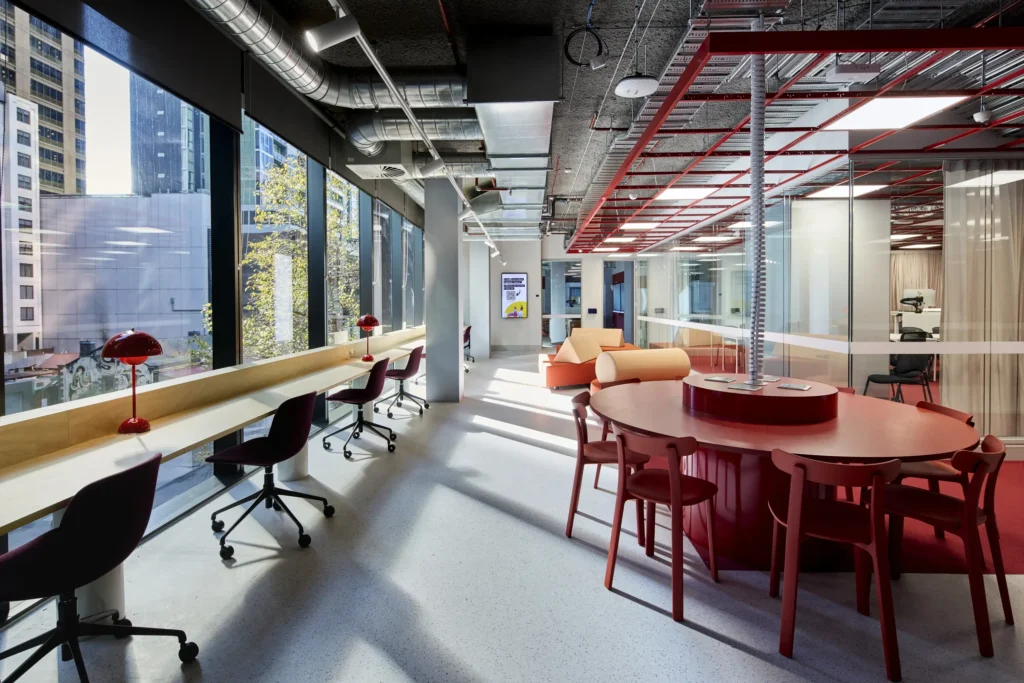
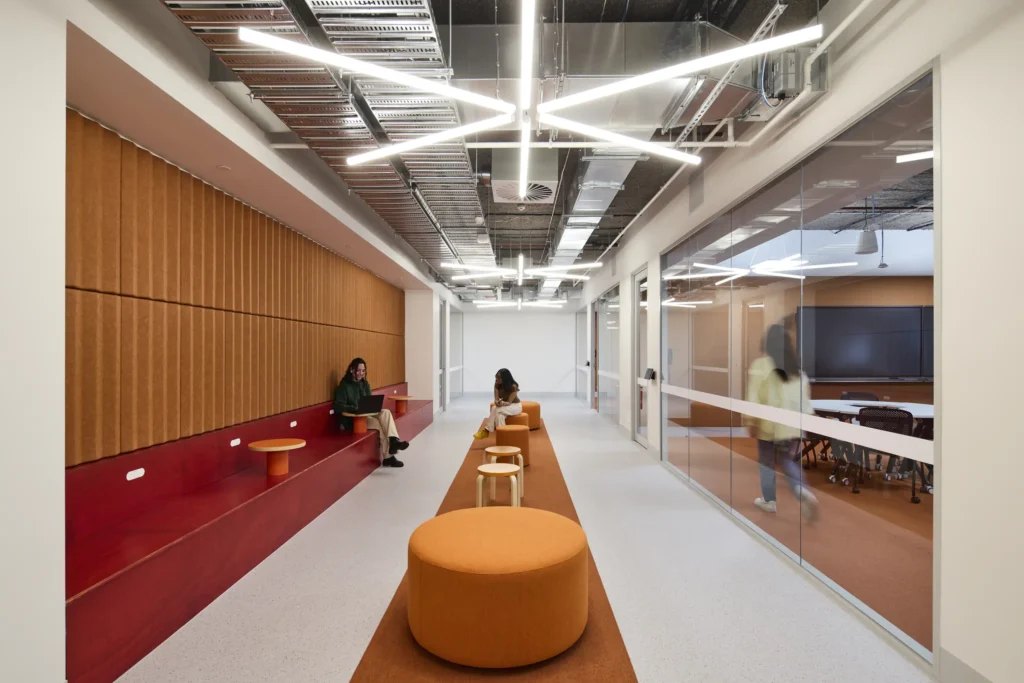
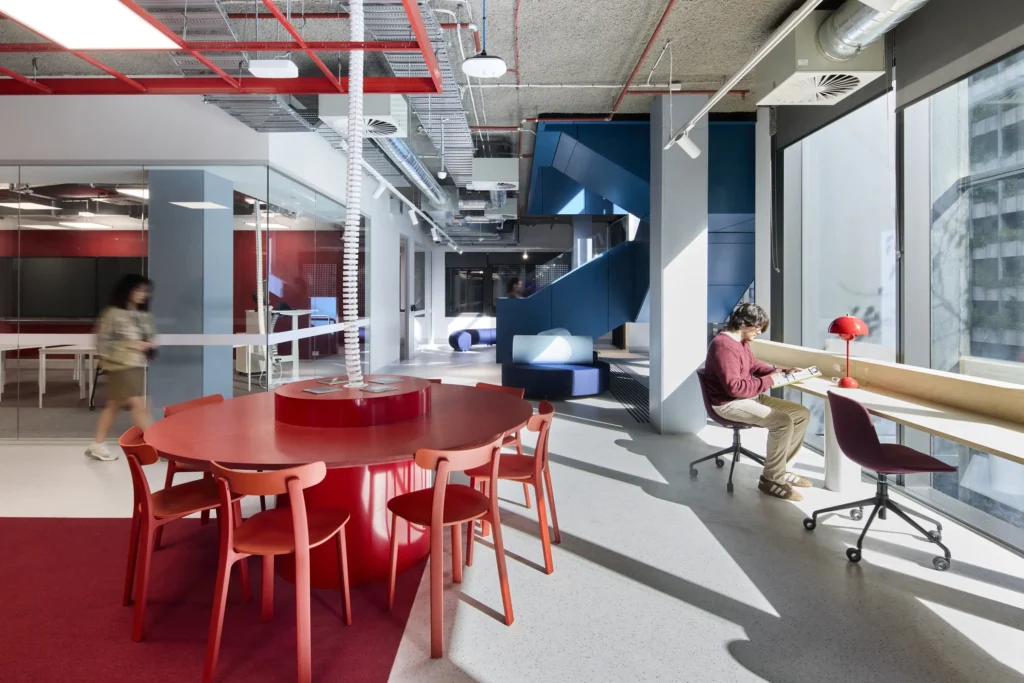
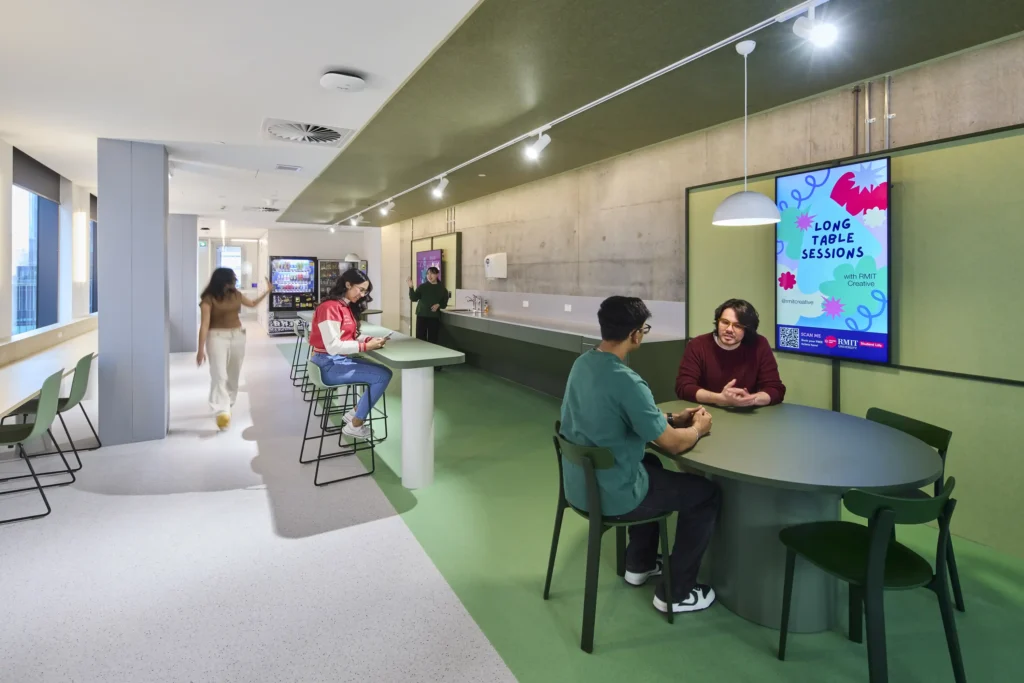

The Importance of Professional Camera Equipment
Professional-grade equipment provides a significant advantage in architectural photography. Modern high-end camera bodies with powerful sensors capture more information in a single frame, significantly simplifying the editing process. This technological advantage enables professional photographers to achieve results impossible with consumer-grade equipment or smartphone cameras.
Access to top-tier equipment is one of the key differentiators for professional photographers, allowing them to deliver superior image quality that accurately represents properties in their best light. This investment in professional gear directly translates to better outcomes for clients marketing their properties.
The Secret of Timing in Architectural Photography
Perhaps the most crucial yet often overlooked aspect of architectural photography is timing. Considering the time of day is essential for creating impactful property images. For exterior photography, capturing during the “golden hour”—either early morning or late afternoon—creates a distinctive quality of light that’s soft, dramatic, and has unique contrast characteristics not achievable at other times.
A revealing example involves a commercial building project photographed by drone under less-than-ideal conditions—on a semi-cloudy day around 2:00 in the afternoon. The resulting images were adequate but failed to impress the client. After reshooting the same property shortly after sunrise with clear blue skies, the results were dramatically improved. The early morning light created images so clean and stylised they almost resembled architectural renderings rather than photographs.
This example illustrates how timing can transform architectural photography from merely adequate to exceptionally impactful—a detail that separates professional commercial photographers from amateurs.
Below: early morning light to creative clean textures on building facades.
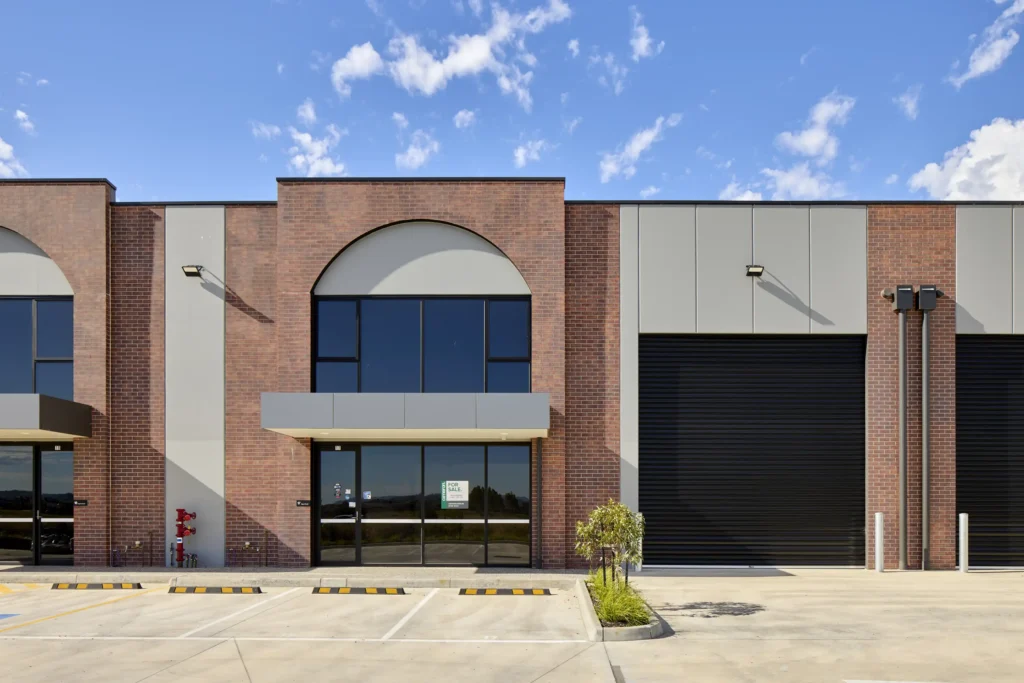
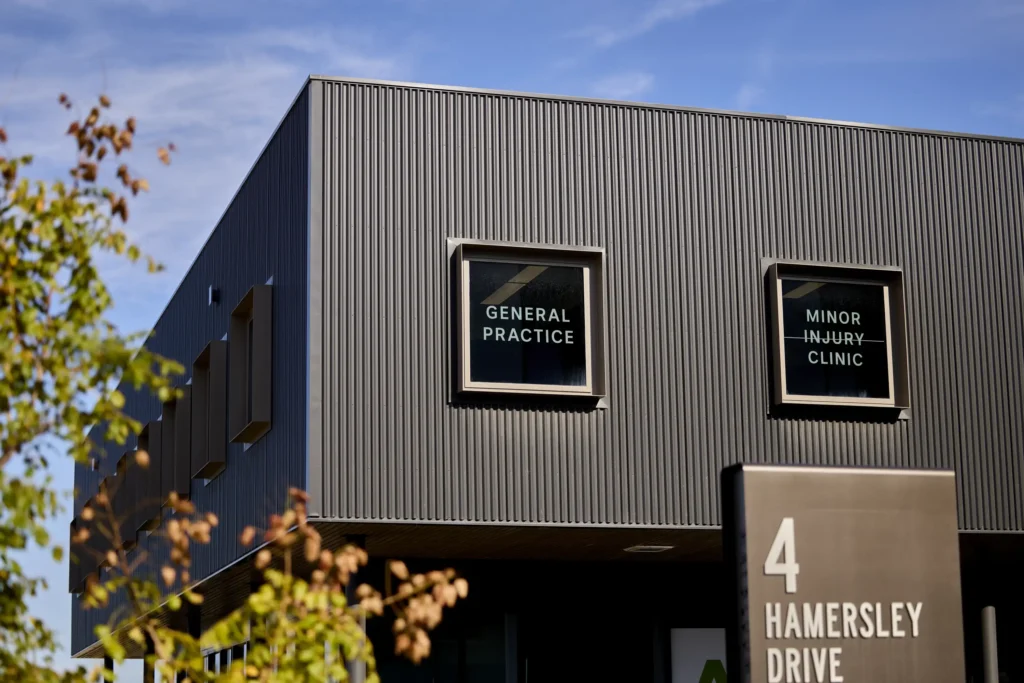
Benefits of Professional Commercial Photography
How Commercial Photography Builds Brand Trust
Quality commercial photography helps establish credibility and foster trust with potential customers. Consistency across platforms is particularly important for brand recognition and give a feel of polished professionalism. When businesses maintain visual consistency across their website, social media, print materials, and advertising, the subtle cues in their imagery make the brand more recognisable to consumers, creating trust and improving recall.
Creating Visual Consistency Across Marketing Channels
For businesses with disjointed visual assets created by different photographers over time, developing a cohesive approach starts with assessing existing materials. A professional approach involves discussing shot lists in relation to brand guidelines—demonstrating an interest not just in taking photos but in understanding the brand’s identity and objectives.
This process helps align new photography with established visual identity while addressing gaps in existing content. Once a business evaluates its current assets, it often becomes evident that updates are needed—perhaps creating a more contemporary look, increasing diversity in imagery, or filling specific content gaps that haven’t been addressed.
Photography Style Guidelines for Brand Consistency
For larger organisations, especially those with multiple offices, developing photography guidelines ensures visual consistency regardless of who captures the images or where they’re taken. While these guidelines are common among major corporations with multiple locations, they remain underutilised by many businesses.
Having established photography guidelines helps maintain visual consistency when working with different photographers across various locations. For organisations with national operations, these guidelines become essential when coordinating with networks of photographers and videographers to ensure consistent visual representation across all markets.
Commercial Photography Refresh Frequency
The optimal frequency for updating commercial photography assets varies by industry and business size. On average, medium to large commercial businesses update their assets between two and six times annually, depending on their industry. Different sectors—from government to financial, legal, medical, and entertainment—have varying content lifespans and requirements.
For organisations with more stable visual needs, such as government agencies or community organisations, an effective approach might include one major photoshoot annually, supplemented with four to six smaller shoots throughout the year focusing on specific projects or niche areas of the business. This balanced approach keeps visual content fresh without requiring constant major investments.
Working With a Commercial Photographer
Effective Communication with Your Photographer
Clear communication is essential for achieving the desired results from a commercial photography project. The initial consultation should focus on developing a high-level understanding of the project requirements. An experienced photographer will ask numerous questions to develop a comprehensive brief while explaining their approach to the project.
These discussions naturally extend to scheduling considerations, allowing the photographer to advise on realistic timeframes and planning for the shoot. This collaborative approach ensures everyone has aligned expectations about the project scope, timeline, and deliverables.
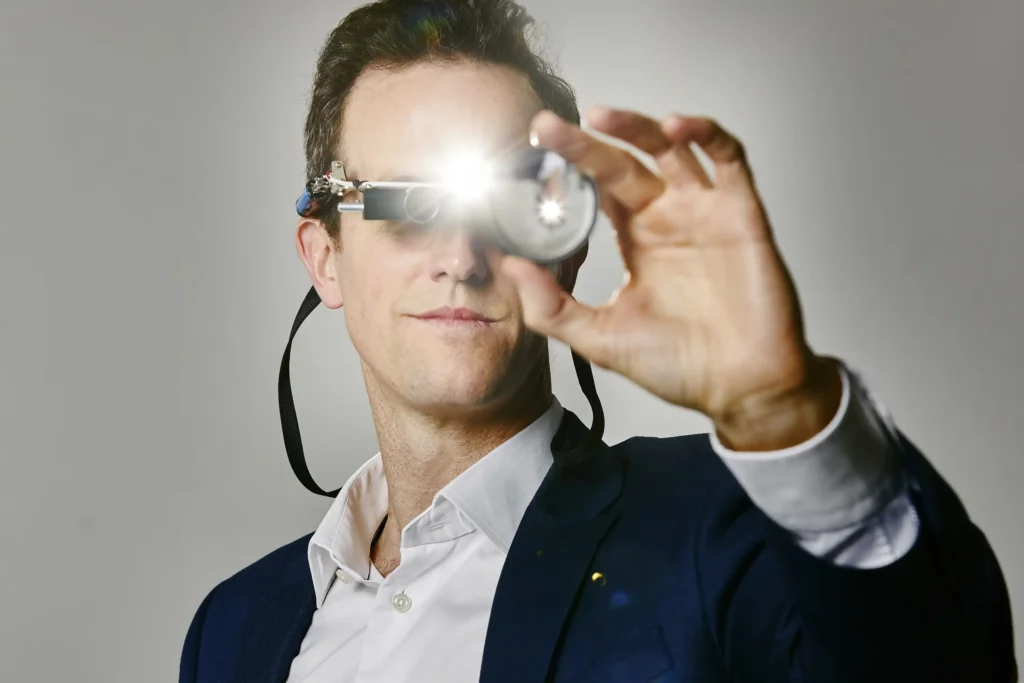
Creating a Comprehensive Photography Brief
A comprehensive brief should include clear objectives, visual references, and detailed specifications for deliverables. This document serves as the roadmap for the entire project, ensuring all parties understand what’s expected and how success will be measured.
Technical specifications are particularly important—detailing required image resolutions, file formats, and delivery methods. These details might seem minor but can significantly impact how effectively the images serve their intended purpose across different marketing channels.
Understanding Commercial Photography Pricing Factors
Several factors influence the cost of commercial photography beyond the basic elements of shooting time and number of delivered images. Additional considerations include production services such as professional talent, hair and makeup artists, styling, location fees, travel expenses, and complex retouching requirements.
Complex retouching might involve compositing multiple images to create a perfect final result that couldn’t be captured in a single shot. This could include combining elements from different photographs—such as placing a product in an environment where it couldn’t be photographed directly, or creating the perfect interaction between models and products that might be challenging to capture organically.
These post-production capabilities allow photographers to overcome practical limitations, creating idealised images that perfectly communicate product benefits and brand messages. Understanding these factors helps businesses budget appropriately for their commercial photography needs.
Conclusion
Commercial photography has evolved significantly with the digital transformation of marketing and business communication. With shorter content lifespans and increased demand across multiple platforms, businesses must approach photography strategically to maximize its impact.
Whether showcasing products, building brand identity, creating lifestyle connections, or highlighting architectural spaces, professional commercial photography delivers measurable benefits that directly impact business success.
Now is the time to evaluate your current visual assets and consider how updated, professionally-captured images could strengthen your brand presence and drive engagement across all your marketing channels.


Kit is a seasoned Kiwi-born photographer with over 15 years of industry experience. Starting his journey in Christchurch, New Zealand, before moving to Melbourne, Australia, where he founded Kit Photography in 2012.
With a deep passion for photography that began in his early teens, Kit has honed his skills across various genres, including capturing people, products, and properties. His extensive experience allows him to tell compelling stories through powerful imagery, showcasing his technical expertise and creative vision.
Kit’s client-centered approach and friendly professionalism create a comfortable and dynamic atmosphere on every project. His ability to understand his clients goals ensures exceptional results and lasting professional relationships.
SERVICES
Commercial Photography

Our commercial photography service creates compelling and unique images for all your commercial needs, including advertising, marketing, and establishing a cohesive brand image. It is a powerful tool to showcase your products, and services, and highlight your unique selling points while establishing and communicating a strong brand identity.
Find out how our commercial photography services can help you stand out from the competition, and elevate your business image.
Corporate Photography
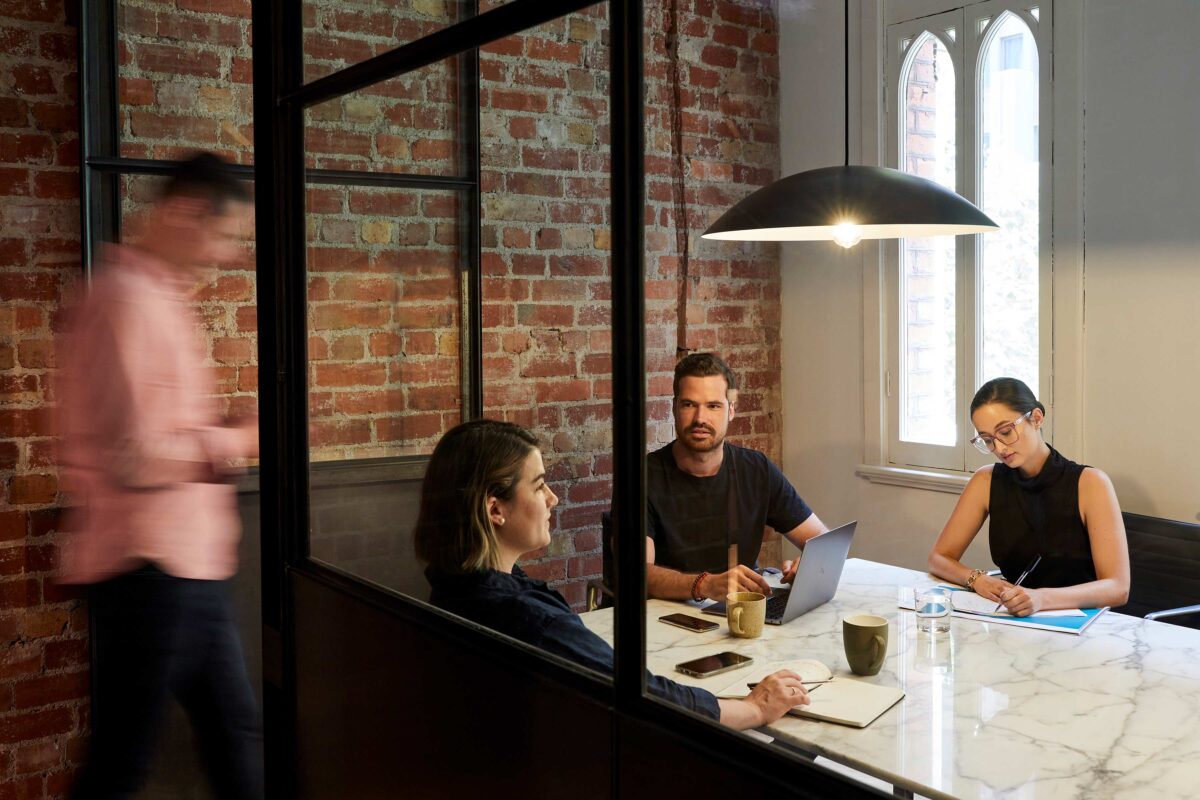
Professional corporate photography is essential to establish or enhance your brand and corporate image while connecting with your audience. Our service provides high-quality images that accurately reflect your company’s values, culture, and brand identity, creating a professional presence that accurately represents your business.
Find out more below about how our corporate photography packages can help you strengthen your business image and connect with your customers, stakeholders and employees.
Lifestyle Photography

The power of professional lifestyle photography cannot be ignored. Lifestyle photography has the unique ability to captivate the imagination, desires and aspirations of an audience, through the use of authentic, and relatable imagery. Drawing the viewer into an evocative visual narrative of your brand, lifestyle photography encourages an emotional connection with your business, brand identity and values. With the subtle integration of your business’s product and services, lifestyle photography avoids the overt sales pitch, instead allowing your audience to organically form positive associations and connections with your business, and see how their experience could be enhanced with your product or service.
